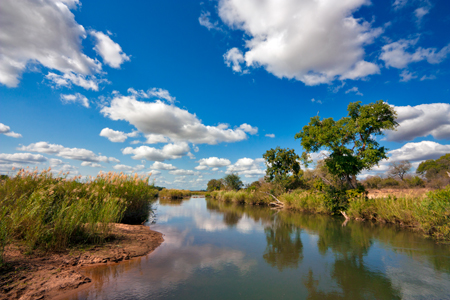---
title: "Using resmush"
output: rmarkdown::html_vignette
bibliography: REFERENCES.bib
link-citations: yes
vignette: >
%\VignetteIndexEntry{Using resmush}
%\VignetteEngine{knitr::rmarkdown}
%\VignetteEncoding{UTF-8}
---
**resmush** is a **R** package that allow users to optimize and compress images
using [**reSmush.it**](https://resmush.it/). reSmush.it is a free API that
provides image optimization, and it has been implemented on Wordpress, Drupal or
Magento.
Some of the features of **reSmush.it** are:
- Free optimization services, no API key required.
- Optimize local and online images.
- Image files supported: `png`, `jpg/jpeg`, `gif`, `bmp`, `tiff`.
- Max image size: 5 Mb.
- Compression via several algorithms:
- [**PNGQuant**](https://pngquant.org/): Strip unneeded chunks from
`png`s, preserving a full alpha transparency.
- [**JPEGOptim**](https://github.com/tjko/jpegoptim)**:** Lossless
optimization based on optimizing the Huffman tables.
- [**OptiPNG**](https://optipng.sourceforge.net/): `png` reducer that is
used by several online optimizers.
## Example
Compressing an online `jpg` image:
``` r
library(resmush)
url <- paste0(
"https://raw.githubusercontent.com/dieghernan/",
"resmush/main/img/jpg_example_original.jpg"
)
resmush_url(url, outfile = "jpg_example_compress.jpg", overwrite = TRUE)
#> ══ resmush summary ═══════════════════════════════════════════════════════════════════════════════
#> ℹ Input: 1 url with size 178.7 Kb
#> ✔ Success for 1 url: Size now is 45 Kb (was 178.7 Kb). Saved 133.7 Kb (74.82%).
#> See result in directory '.'.
```
::: figure
[{alt="Original uncompressed file"
width="100%"}](https://raw.githubusercontent.com/dieghernan/resmush/main/img/jpg_example_original.jpg)
[{alt="Optimized file"
width="100%"}](https://dieghernan.github.io/resmush/reference/figures/jpg_example_compress.jpg)
Original picture (top) 178.7 Kb and optimized picture (bottom) 45 Kb
(Compression 74.8%). Click to enlarge.
:::
The quality of the compression can be adjusted in the case of `jpg` files using
the parameter `qlty`. However, it is recommended to keep this value above 90 to
get a good image quality.
``` r
# Extreme case
resmush_url(url,
outfile = "jpg_example_compress_low.jpg",
overwrite = TRUE, qlty = 3
)
#> ══ resmush summary ═══════════════════════════════════════════════════════════════════════════════
#> ℹ Input: 1 url with size 178.7 Kb
#> ✔ Success for 1 url: Size now is 2.2 Kb (was 178.7 Kb). Saved 176.4 Kb (98.74%).
#> See result in directory '.'.
```
::: figure
[{width="100%"}](https://dieghernan.github.io/resmush/reference/figures/jpg_example_compress_low.jpg)
Low quality image due to a high compression rate.
:::
All the functions return invisibly a data set with a summary of the process. The
next example shows how when compressing a local file.
``` r
png_file <- system.file("extimg/example.png", package = "resmush")
# For the example, copy to a temporary file
tmp_png <- tempfile(fileext = ".png")
file.copy(png_file, tmp_png, overwrite = TRUE)
#> [1] TRUE
summary <- resmush_file(tmp_png)
tibble::as_tibble(summary[, -c(1, 2)])
#> # A tibble: 1 × 6
#> src_size dest_size compress_ratio notes src_bytes dest_bytes
#>
#> 1 239.9 Kb 70.7 Kb 70.54% OK 245618 72356
```
## Other alternatives
There are other alternatives for optimizing images with **R**:
- **xfun** [@xfun], which includes the following functions for optimizing
image files:
- `xfun::tinify()` is similar to `resmush_file()` but uses
[**TinyPNG**](https://tinypng.com/). An API key is required.
- `xfun::optipng()` compresses local files with **OptiPNG** (which needs
to be installed locally).
- [**tinieR**](https://jmablog.github.io/tinieR/) package by
[jmablog](https://jmablog.com/). An **R** package that provides a full
interface with [**TinyPNG**](https://tinypng.com/).
- [**optout**](https://github.com/coolbutuseless/optout) package by
[\@coolbutuseless](https://coolbutuseless.github.io/). Similar to
`xfun::optipng()` with more options. Requires additional software to be
installed locally.
| tool | CRAN | Additional software? | Online? | API Key? | Limits? |
|-------------|-------------|-------------|-------------|-------------|-----------------|
| `xfun::tinify()` | Yes | No | Yes | Yes | 500 files/month (Free tier) |
| `xfun::optipng()` | Yes | Yes | No | No | No |
| **tinieR** | No | No | Yes | Yes | 500 files/month (Free tier) |
| **optout** | No | Yes | No | No | No |
| **resmush** | Yes | No | Yes | No | Max size 5Mb |
: Table 1: **R** packages: Comparison of alternatives for optimizing images.
| tool | png | jpg | gif | bmp | tiff | webp | pdf |
|-------------------|-----|-----|-----|-----|------|------|-----|
| `xfun::tinify()` | ✅ | ✅ | ❌ | ❌ | ❌ | ✅ | ❌ |
| `xfun::optipng()` | ✅ | ❌ | ❌ | ❌ | ❌ | ❌ | ❌ |
| **tinieR** | ✅ | ✅ | ❌ | ❌ | ❌ | ✅ | ❌ |
| **optout** | ✅ | ✅ | ❌ | ❌ | ❌ | ❌ | ✅ |
| **resmush** | ✅ | ✅ | ✅ | ✅ | ✅ | ❌ | ❌ |
: Table 2: **R** packages: Formats admitted.
## References